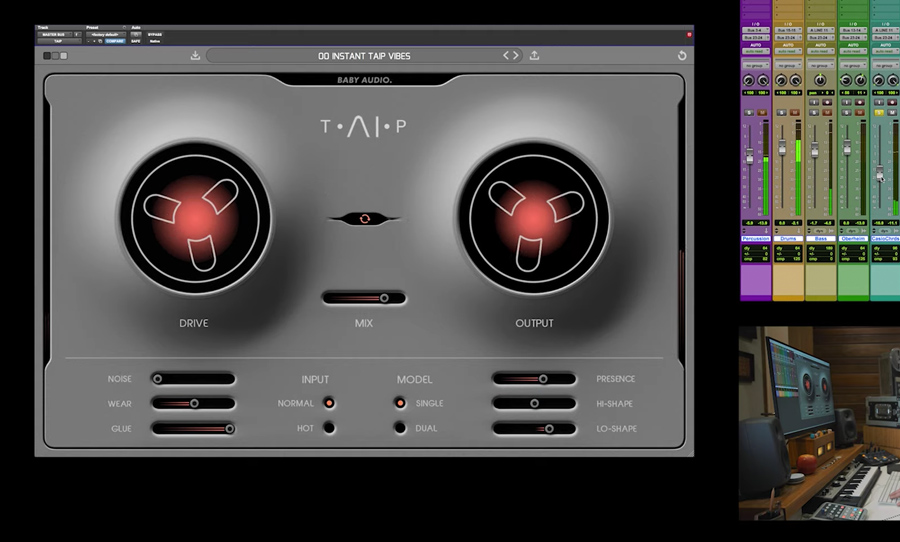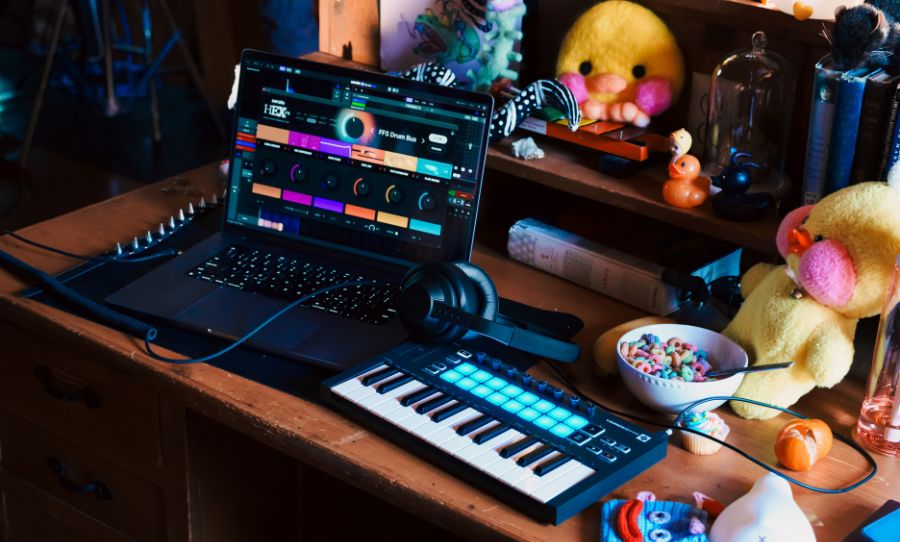BABY Audio’s family of intuitive, tasteful, and fun plugins continues to grow. TAIP harnesses the power of tape (of course). Engineering the Sound investigates.
Relatively new to the plugin scene, it’s fair to say that BABY Audio hit the ground running. Since its incredibly user-friendly I Heart NY parallel compressor hit the streets, BABY Audio has taken on delay (Comeback Kid and Spaced Out), VHS-based lo-fi goodness (Super VHS), intelligent signal balancing (Smooth Operator), and more. With TAIP, all the vibe of analog tape has been harnessed and understandably, the team at Engineering the Sound was keen to find out more.
In classic BABY Audio style, user-friendliness is a high priority. A single, elegant user interface is presented, with all controls accessible straightaway. And you can see in the video below, TAIP is simply made for hands-on, live experimentation.
And speaking of those controls, let’s take a closer look at each of the parameters and what they do:
DRIVE
Increases the input gain — like feeding a louder signal into a tape machine. It will get increasingly more saturated and eventually turn into straight-up distortion. The plugin can be used for both subtle glue or saturation and as an alternative to your distortion plugins.
OUTPUT
Adjusts the global plugin output level.
AUTO-GAIN
When this feature is engaged you can increase the DRIVE knob without experiencing crazy increases in output level. (Auto-gain automatically compensates for the extra input gain by adjusting the output under the hood).
MIX
Sets the global dry/wet level. You’ll see in the video that when WEAR is engaged and MIX is below 100 you will get a tape flanging/phasing effect. This is not a bug, but rather a consequence of the pitch shifting on the wet signal (caused by WEAR) phasing in and out with the dry signal. So if you’re looking to create those Tame Impala-style full mixes sweeps, TAIP makes it easy!
NOISE
Introduces tape noise. This effect is gated, meaning the noise is only playing back when audio is running through the effect.
WEAR
The goal here is to emulate a worn-out tape machine. So this parameter combines wow and flutter and introduces a new frequency response curve that matches a worn-out tape. It also messes ever-so-slightly with the stereo perspective to imitate the behaviour of a damaged tape machine. You can go from 0-100, meaning it can be a very subtle effect. This one is for the lo-fi junkies!
GLUE
While tape machines aren’t ‘compressors’ in the traditional sense, they do have a tendency to slightly compress the audio in their own way. BABY Audio has analysed this type of natural compression that happens in a tape machine and build it into its own feature. This is definitely one of the reasons why people persist with using tape, and in TAIP, it can be dialled in with subtlety or cranked up to the max.

INPUT
Hot mode drives the tape algorithm slightly harder to give you more saturation. Normal mode is what the name implies.
MODEL
Single is a normal tape emulation. Dual basically creates a signal path of two tape emulations in a chain. Whatever you do on the DRIVE knob is distributed evenly between these two emulations. Dual-mode can be compared to running your sound through two tape machines instead of one and driving each a little bit instead of driving one instance of tape a lot.
PRESENCE
Alters the frequency response curve to bring out more upper-mids, highs, and presence.
HI-SHAPE
A bipolar slider that lets you either distort the top-end more or less than the rest of the frequency spectrum. If you turn the slider right you prevent the top-end from being driven as much as the rest of the frequency spectrum — if you turn it left you will distort the top-end more than the rest.
LO-SHAPE
The opposite of the HI-SHAPE. Used together, the HI and LO-SHAPE provide a powerful platform for slotting individual sound sources into a mix or shaping an entire mix if you’ve added TAIP to the master bus.
PRESET BAR
Changes colour, saves presets, loads preset (there are more than 50 to choose from), and initialises the plugin.
TAIP is out now! Visit the BABY Audio website for all the details.



